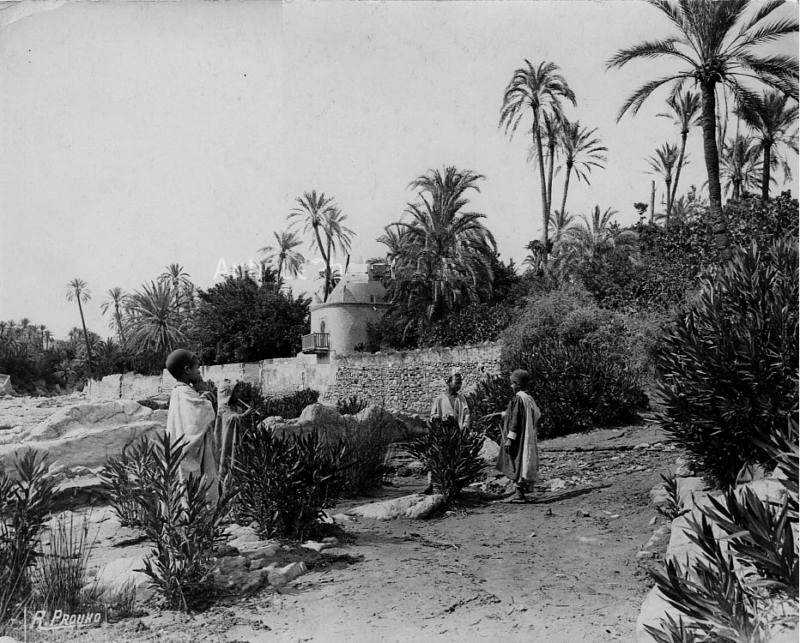
Algerian Boys' Clothes: Chronology--Islamic Era (7th-19th centuries)

Figure 1.--This photograph was taken at Bou Saada, probably in the late-19th century. This was during the French colonial era, but it could have easily been taken centuries earlier. Bou Saada means 'place of happiness'. It is located about 245 km south of Algiers in the southern foothills of the Atlas mountains. It was a market place important for centuries. Arisans produced jewelry, metalwork, carpet and bousaadi knives. It was aThere is also a textile mill in town. Even in modern times, Bou-Saada is an important trading post for nomads to trade with the more settled people of the coastal region.
|
|
The Islamic era covers a long period, more than a millenium. Unfortunately at this time we have little infotmation on clothing trends. Algeria was conquered by Arab invaders (7th century). Clothing styles appear to have become heavily influenced by Arab styles. We are not entirely sure ascto how Arab styles merged with the earlier Roman styles and the Berber/Bedouine styles. Algeria was dominated by the Arabs for the next 13 centuries. We do not yet know if there were destinctive Algerian styles. After the Renaissance and growth of European power, Algiers became one of the Barbary Pirate states, nominally apart of the Ottoman Empire. As a result, Turkish fashions became important, at least in the northern coastal cities. Paintings and drawings od the Barbary Pirates often show the Algerians dressed in baggy pants. This was a garment more of Turkish/Persian origins, although was adopted in the Caliphate. We are unsure just how wide spread the styles were. Photography was developed at about the same time that France began its colonization of Algeria (1830s). And even in the 20th century, there were Algerian villages that were largely untouched by French rule. We believe the fashions worn were similar to those worn during the Islamic era. Thus there is some photographic evidence of how Algerians dressed in the Islamic era. Village men might wear a burnous (a long, hooded robe) and baggy pants. Women traditionally wore a haik (a long piece of cloth draped over the entire body and head). The hijab (a long, loose dress and hair covering) was another Islamic garment worn by many women. We do not know of any clothing styles for children, although Islamic modesty concerns were age based.
HBC

Navigate the Boys' Historical Clothing Web Site:
[Introduction]
[Activities]
[Biographies]
[Chronology]
[Cloth and textiles]
[Clothing styles]
[Countries]
[Topics]
[Bibliographies]
[Contributions]
[FAQs]
[Glossaries]
[Images]
[Links]
[Registration]
[Tools]
[Boys' Clothing Home]
Navigate the Boys' Historical Clothing National Pages:
[Return to the Main Algerian chronology page]
[Return to the Main Algerian page]
[Return to the Main Middle-Eastern and North African page]
[Egypt]
[Libya]
[Mali]
[Morocco]
[Sudan]
[Turkey]
[Belgium]
[England]
[France]
[Germany]
[Ireland]
[Italy]
Created: 6:10 AM 8/4/2011
Last updated: 6:10 AM 8/4/2011



